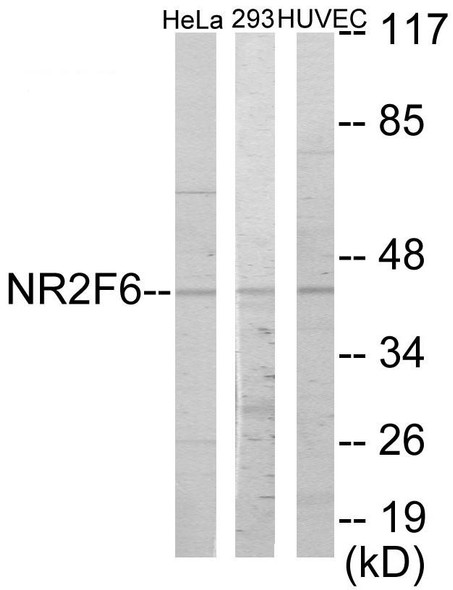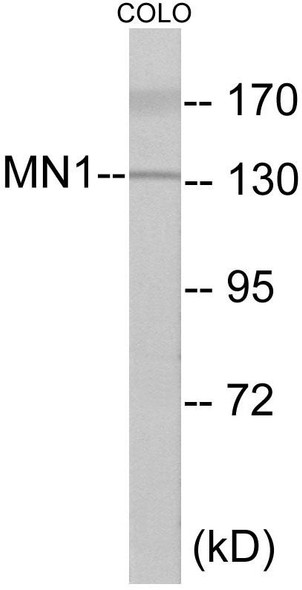Description
SURF1 Colorimetric Cell-Based ELISA
The SURF1 Colorimetric Cell-Based ELISA Kit is a powerful tool for detecting and quantifying the expression of SURF1 protein in cell lysates. This kit offers high sensitivity and specificity, providing accurate and reliable results for your research needs.SURF1 is a key protein involved in the assembly of cytochrome c oxidase, an essential component of the mitochondrial respiratory chain. Mutations in the SURF1 gene have been linked to Leigh syndrome and other mitochondrial disorders, making it a valuable biomarker for studying these conditions and exploring potential therapeutic interventions.
With the SURF1 Colorimetric Cell-Based ELISA Kit, researchers can easily analyze SURF1 expression levels in cell samples, offering valuable insights into mitochondrial function and disease pathology. This kit is suitable for a wide range of research applications, making it a versatile tool for advancing scientific understanding in the field of mitochondrial biology.
| Product Name: | SURF1 Colorimetric Cell-Based ELISA |
| Product Code: | CBCAB01107 |
| ELISA Type: | Cell-Based |
| Target: | SURF1 |
| Reactivity: | Human, Mouse, Rat |
| Dynamic Range: | > 5000 Cells |
| Detection Method: | Colorimetric 450 nmStorage/Stability:4°C/6 Months |
| Format: | 96-Well Microplate |
The SURF1 Colorimetric Cell-Based ELISA Kit is a convenient, lysate-free, high throughput and sensitive assay kit that can detect SURF1 protein expression profile in cells. The kit can be used for measuring the relative amounts of SURF1 in cultured cells as well as screening for the effects that various treatments, inhibitors (ie siRNA or chemicals), or activators have on SURF1.
Qualitative determination of SURF1 concentration is achieved by an indirect ELISA format. In essence, SURF1 is captured by SURF1-specific primary antibodies while the HRP-conjugated secondary antibodies bind the Fc region of the primary antibody. Through this binding, the HRP enzyme conjugated to the secondary antibody can catalyze a colorimetric reaction upon substrate addition. Due to the qualitative nature of the Cell-Based ELISA, multiple normalization methods are needed:
| 1. | A monoclonal antibody specific for human GAPDH is included to serve as an internal positive control in normalizing the target absorbance values. |
| 2. | Following the colorimetric measurement of HRP activity via substrate addition, the Crystal Violet whole-cell staining method may be used to determine cell density. After staining, the results can be analysed by normalizing the absorbance values to cell amounts, by which the plating difference can be adjusted. |
| Database Information: | Gene ID: 6834, UniProt ID: Q15526, OMIM: 185620/256000, Unigene: Hs.512464 |
| Gene Symbol: | SURF1 |
| Sub Type: | None |
| UniProt Protein Function: | SURF1: Probably involved in the biogenesis of the COX complex. Defects in SURF1 are a cause of Leigh syndrome (LS). LS is a severe neurological disorder characterized by bilaterally symmetrical necrotic lesions in subcortical brain regions that is commonly associated with systemic cytochrome c oxidase (COX) deficiency. Belongs to the SURF1 family. 2 isoforms of the human protein are produced by alternative splicing. |
| UniProt Protein Details: | Protein type:Oxidoreductase; Membrane protein, multi-pass; Membrane protein, integral; Mitochondrial Chromosomal Location of Human Ortholog: 9q34.2 Cellular Component: integral to membrane; mitochondrial respiratory chain Molecular Function:protein binding; cytochrome-c oxidase activity Biological Process: ATP biosynthetic process; respiratory chain complex IV assembly; aerobic respiration; oxidative phosphorylation Disease: Leigh Syndrome |
| NCBI Summary: | This gene encodes a protein localized to the inner mitochondrial membrane and thought to be involved in the biogenesis of the cytochrome c oxidase complex. The protein is a member of the SURF1 family, which includes the related yeast protein SHY1 and rickettsial protein RP733. The gene is located in the surfeit gene cluster, a group of very tightly linked genes that do not share sequence similarity, where it shares a bidirectional promoter with SURF2 on the opposite strand. Defects in this gene are a cause of Leigh syndrome, a severe neurological disorder that is commonly associated with systemic cytochrome c oxidase deficiency. [provided by RefSeq, Jul 2008] |
| UniProt Code: | Q15526 |
| NCBI GenInfo Identifier: | 2498973 |
| NCBI Gene ID: | 6834 |
| NCBI Accession: | Q15526.1 |
| UniProt Secondary Accession: | Q15526,Q5T8T3, Q5T8T4, |
| UniProt Related Accession: | Q15526 |
| Molecular Weight: | 300 |
| NCBI Full Name: | Surfeit locus protein 1 |
| NCBI Synonym Full Names: | surfeit 1 |
| NCBI Official Symbol: | SURF1 |
| NCBI Protein Information: | surfeit locus protein 1 |
| UniProt Protein Name: | Surfeit locus protein 1 |
| Protein Family: | SURF1-like protein |
| UniProt Gene Name: | SURF1 |
| UniProt Entry Name: | SURF1_HUMAN |
| Component | Quantity |
| 96-Well Cell Culture Clear-Bottom Microplate | 2 plates |
| 10X TBS | 24 mL |
| Quenching Buffer | 24 mL |
| Blocking Buffer | 50 mL |
| 15X Wash Buffer | 50 mL |
| Primary Antibody Diluent | 12 mL |
| 100x Anti-Phospho Target Antibody | 60 µL |
| 100x Anti-Target Antibody | 60 µL |
| Anti-GAPDH Antibody | 60 µL |
| HRP-Conjugated Anti-Rabbit IgG Antibody | 12 mL |
| HRP-Conjugated Anti-Mouse IgG Antibody | 12 mL |
| SDS Solution | 12 mL |
| Stop Solution | 24 mL |
| Ready-to-Use Substrate | 12 mL |
| Crystal Violet Solution | 12 mL |
| Adhesive Plate Seals | 2 seals |
The following materials and/or equipment are NOT provided in this kit but are necessary to successfully conduct the experiment:
- Microplate reader able to measure absorbance at 450 nm and/or 595 nm for Crystal Violet Cell Staining (Optional)
- Micropipettes with capability of measuring volumes ranging from 1 µL to 1 ml
- 37% formaldehyde (Sigma Cat# F-8775) or formaldehyde from other sources
- Squirt bottle, manifold dispenser, multichannel pipette reservoir or automated microplate washer
- Graph paper or computer software capable of generating or displaying logarithmic functions
- Absorbent papers or vacuum aspirator
- Test tubes or microfuge tubes capable of storing ≥1 ml
- Poly-L-Lysine (Sigma Cat# P4832 for suspension cells)
- Orbital shaker (optional)
- Deionized or sterile water
*Note: Protocols are specific to each batch/lot. For the correct instructions please follow the protocol included in your kit.
| Step | Procedure |
| 1. | Seed 200 µL of 20,000 adherent cells in culture medium in each well of a 96-well plate. The plates included in the kit are sterile and treated for cell culture. For suspension cells and loosely attached cells, coat the plates with 100 µL of 10 µg/ml Poly-L-Lysine (not included) to each well of a 96-well plate for 30 minutes at 37°C prior to adding cells. |
| 2. | Incubate the cells for overnight at 37°C, 5% CO2. |
| 3. | Treat the cells as desired. |
| 4. | Remove the cell culture medium and rinse with 200 µL of 1x TBS, twice. |
| 5. | Fix the cells by incubating with 100 µL of Fixing Solution for 20 minutes at room temperature. The 4% formaldehyde is used for adherent cells and 8% formaldehyde is used for suspension cells and loosely attached cells. |
| 6. | Remove the Fixing Solution and wash the plate 3 times with 200 µL 1x Wash Buffer for five minutes each time with gentle shaking on the orbital shaker. The plate can be stored at 4°C for a week. |
| 7. | Add 100 µL of Quenching Buffer and incubate for 20 minutes at room temperature. |
| 8. | Wash the plate 3 times with 1x Wash Buffer for 5 minutes each time. |
| 9. | Add 200 µL of Blocking Buffer and incubate for 1 hour at room temperature. |
| 10. | Wash 3 times with 200 µL of 1x Wash Buffer for 5 minutes each time. |
| 11. | Add 50 µL of 1x primary antibodies (Anti-SURF1 Antibody and/or Anti-GAPDH Antibody) to the corresponding wells, cover with Parafilm and incubate for 16 hours (overnight) at 4°C. If the target expression is known to be high, incubate for 2 hours at room temperature. |
| 12. | Wash 3 times with 200 µL of 1x Wash Buffer for 5 minutes each time. |
| 13. | Add 50 µL of 1x secondary antibodies (HRP-Conjugated AntiRabbit IgG Antibody or HRP-Conjugated Anti-Mouse IgG Antibody) to corresponding wells and incubate for 1.5 hours at room temperature. |
| 14. | Wash 3 times with 200 µL of 1x Wash Buffer for 5 minutes each time. |
| 15. | Add 50 µL of Ready-to-Use Substrate to each well and incubate for 30 minutes at room temperature in the dark. |
| 16. | Add 50 µL of Stop Solution to each well and read OD at 450 nm immediately using the microplate reader. |
(Additional Crystal Violet staining may be performed if desired – details of this may be found in the kit technical manual.)






